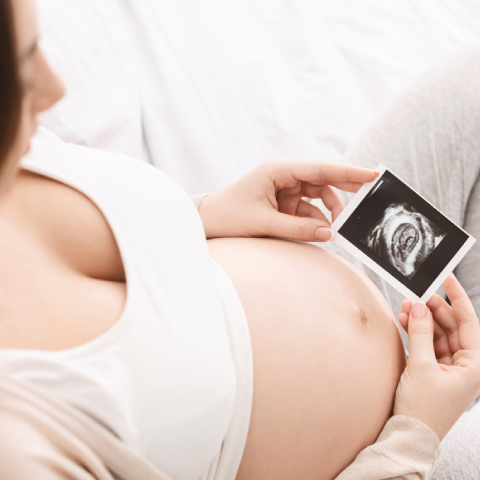All About IVF Gender Selection
IVF gender selection
In-vitro fertilization (IVF) gender selection is a process used to increase the chances of having a baby of the desired gender before the embryo is implanted into the womb. The process involves preimplantation genetic diagnosis (PGD), an advanced laboratory technique used to identify the sex of embryos before they are transferred to the uterus.
IVF gender selection allows couples to select the gender of their future child in cases where there may be serious genetic diseases that are gender-specific, or if a couple wishes to balance their family with desired proportions of boys and girls.
The process of IVF gender selection begins with IVF, in which a woman’s eggs are fertilized in a laboratory setting. After the cells begin to divide into blastocysts, one or two cells are extracted and tested. The cells are tested to determine the gender of the baby, male (XY) or female (XX).
If the desired gender is identified, the embryo is then implanted into the woman’s uterus. If the desired gender is not found in the first cycle, couples can opt to try again with another cycle.
Though the process of IVF gender selection allows couples to increase their chances of having a baby of the desired gender, it is important to understand that the process is not 100 percent accurate. Couples should consider the risks involved, including the risk of adverse genetic abnormalities in embryos of either gender. Additionally, there may be legal, ethical and religious considerations to take into account before undergoing IVF gender selection.
For those considering IVF gender selection, it is important to seek out professionals who are experienced and well-trained in the procedure in order to ensure the safety and efficacy of the process. Choosing a center who will work with you to discuss the risks and benefits of the procedure is an important step in making an informed decision.
Preimplantation genetic diagnosis (PGD)
Preimplantation genetic diagnosis (PGD) is a technique used to identify genetic disorders in embryos prior to implantation in the uterus. PGD is done as part of in-vitro fertilization (IVF) procedures in order to increase the likelihood of a successful pregnancy. In PGD, doctors can use a single cell from a fertilized embryo to detect if there are any genetic diseases or disorders present.
PGD is used by couples who are at a high risk of conceiving a fetus with a genetic disorder or who carry a known gene mutation. In these cases, PGD can be used to identify and select unaffected embryos for implantation, increasing the likelihood of a healthy, successful pregnancy.
In PGD, a single cell is removed from the embryo and tested for genetic abnormalities. Depending on the type of disorder being tested for, the cell may be analyzed for its DNA sequence or the chromosomes from the cell can be counted under a microscope. If the test reveals a genetic abnormality, the affected embryo is not selected for implantation.
It is important to note that PGD is not always 100 percent accurate. False positives, or embryos mistakenly identified as having genetic abnormalities when they do not, do exist. Additionally, PGD cannot test for all genetic diseases, such as fetal alcohol spectrum disorder.
For those considering PGD, it is important to weigh the risks and benefits of the procedure. Though PGD can increase the chance of a successful pregnancy, there may be ethical or religious considerations that should be taken into account before undergoing the process. It is also important to consult with a medical professional who is experienced and well–versed in PGD in order to ensure the safety and efficacy of the process.

Gender selection options
In today’s society, it has been made possible to choose the sex of a future child before conception. This is a procedure known as gender selection, and although controversial, it is becoming increasingly popular around the world. Gender selection options span from artificial insemination to in vitro fertilization (IVF). Artificial insemination is one gender selection option that has been around for many years. The process involves inserting a sperm sample containing either only X or Y chromosomes into a woman’s uterus. This increases the possibility of a baby of the desired sex being conceived. In vitro fertilization is a more advanced method of gender selection.
IVF involves taking eggs from the woman’s ovary and fertilizing them in a laboratory setting with a sperm sample. Prior to implantation into the uterus, genetic testing can be done to determine the sex of the embryos. The embryos carrying the desired sex can then be implanted into the woman’s uterus, and the remaining embryos can be frozen for future use. Although both artificial insemination and IVF are viable options for gender selection, both come with potential risks. All fertility treatments, including gender selection, feature risks both for the mother and child.
Side effects of IVF may include ovarian hyperstimulation syndrome, or the possibility of conceiving multiple babies or no babies at all. In addition to potential risks and side effects, there is also the ethical consideration of gender selection. Some countries have banned gender selection for research or sex-specific abortion reasons, while in other countries it is a personal choice.
Gender selection is a difficult decision, and one that should always be made with the help of a doctor. They will be able to help advice on the risks and side effects involved, and ensure that the best fertility treatments are being taken. Ultimately, the decision of gender selection is a personal one and should be made with careful thought and consideration.
IVF gender selection process
In vitro fertilization (IVF) gender selection is a technique that allows prospective parents to choose the gender of their future child prior to conception. The process has both medical and ethical implications and is becoming increasingly popular around the world. IVF gender selection involves the collection of eggs from the woman’s ovary and fertilization in a laboratory setting with a sperm sample. Prior to implantation into the uterus, genetic testing can be done to identify the sex of the embryos.
The embryos carrying the desired sex can then be implanted into the woman’s uterus, and the remaining embryos can be frozen for later use. IVF gender selection is a complex process, and it is important to consider all potential risks and side effects prior to making a decision. Side effects of IVF may include ovarian hyperstimulation syndrome, or the possibility of conceiving multiple babies or no babies at all.
It is always best to consult with a doctor to ensure that the best fertility treatments are being taken. In addition to potential risks and side effects, there is also the ethical consideration of IVF gender selection. It is illegal in some countries, including Canada and China, for genetic research or sex-specific abortion reasons. In other countries, it is a personal choice and can be determined by the parents.
Overall, IVF gender selection is a difficult decision, and the best thing to do is to speak with a doctor before making any changes. They are best equipped to inform any potential risks and side effects, and ensure that the best fertility treatments are being taken. The decision to use IVF gender selection should always be made with thought and consideration.

IVF gender selection success rate
In vitro fertilization (IVF) gender selection is a technique that allows prospective parents to choose the gender of their future child prior to conception. Although this procedure is becoming increasingly popular, there are some important factors to consider when determining the success rate of IVF gender selection. The success rate of IVF gender selection depends on several factors, including the method chosen, the clinic or doctor performing the procedure, and the woman’s egg reserves. For example, IVF involves taking eggs from the woman’s ovary and fertilizing them in a laboratory setting with a sperm sample.
Prior to implantation into the uterus, genetic testing can be done to determine the sex of the embryos. The embryos carrying the desired sex can then be implanted into the woman’s uterus, and the remaining embryos can be frozen for future use. Generally speaking, the success rate for IVF gender selection is generally high. However, the success rate does depend on a number of factors, such as the clinic or doctor performing the procedure and the woman’s egg reserves. Additionally, IVF may come with potential risks and side effects, such as ovarian hyperstimulation syndrome, or the possibility of conceiving multiple babies or no babies at all. It is important to speak to a doctor to ensure that the best fertility treatments are being taken.
In addition to potential risks and side effects, there is also the ethical consideration of IVF gender selection. It is illegal in some countries, including Canada and China, for genetic research or sex-specific abortion reasons. In other countries, it is a personal choice and can be determined by the parents. The success rate of IVF gender selection will depend on the method chosen and the clinic or doctor. It is always best to consult with a doctor to ensure that the best fertility treatments are being taken and any ethical considerations are taken into account. Ultimately, IVF gender selection is a difficult decision, and the best thing to do is to speak with a doctor before making any changes.

